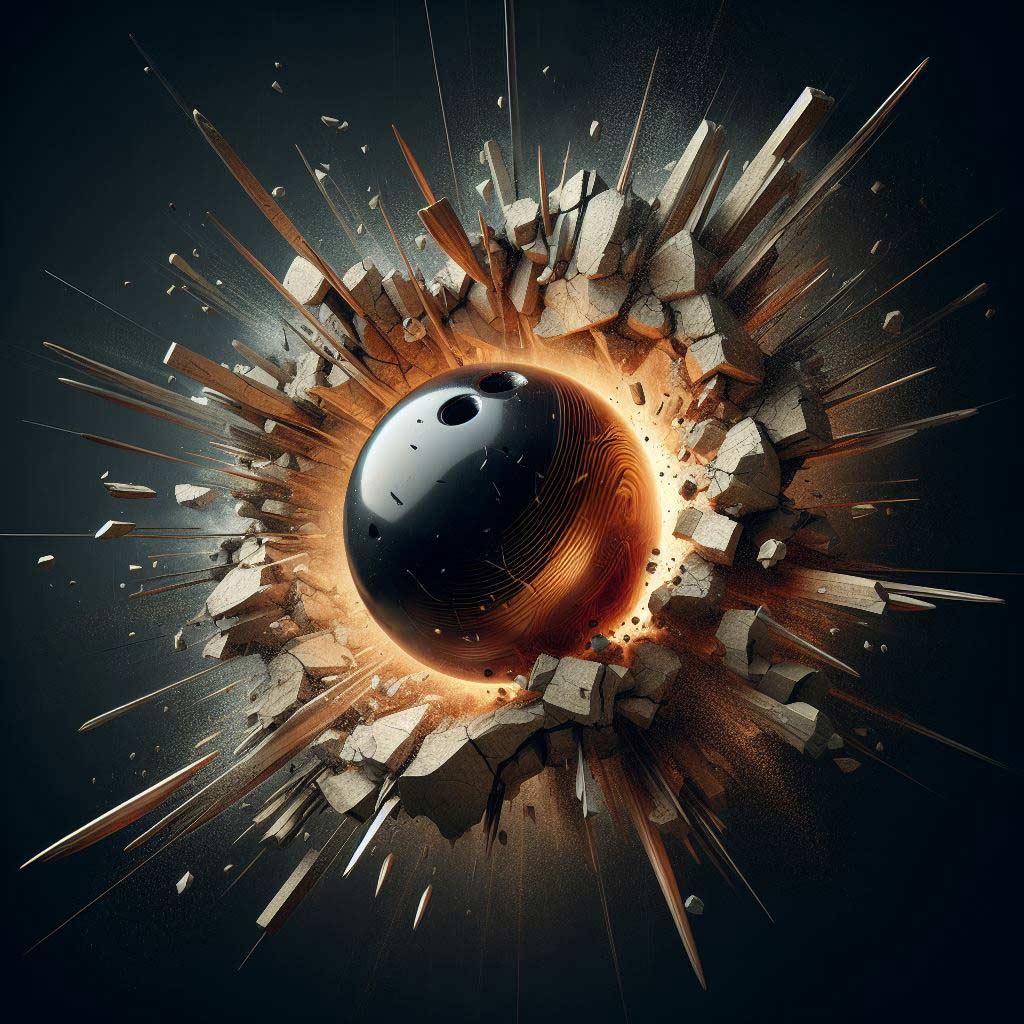For decades, bowling has been a popular pastime enjoyed by people of all ages and skill levels. From casual family outings to competitive league nights, the clatter of pins and the satisfying roll of the ball have become ingrained in American culture. However, the question remains: Is bowling truly a professional sport, or is it merely a recreational activity?
In this comprehensive article, we’ll delve into the world of professional bowling, examining the criteria that define a professional sport and how bowling aligns with those standards.
From the existence of organized leagues and governing bodies to the dedication and athleticism required of professional bowlers, we’ll explore the compelling evidence that solidifies bowling’s status as a legitimate professional sport.
What Defines a Professional Sport?
To understand whether bowling qualifies as a professional sport, we must first establish the characteristics that distinguish professional sports from recreational activities.
Generally, professional sports are characterized by organized leagues, competitive structures, full-time athletes, governing bodies, and significant earning potential.
Bowling meets these criteria in several ways. The Professional Bowlers Association (PBA) and Professional Women’s Bowling Association (PWBA) are well-established organizations that oversee and regulate professional bowling tournaments and events. These organizations maintain strict eligibility requirements, ensuring that only highly skilled and dedicated bowlers can compete at the professional level.
Professional bowling events are highly competitive, with bowlers vying for prestigious titles and substantial prize money. These tournaments follow a structured format, with qualifying rounds and elimination rounds leading up to the final matches. The level of skill and consistency required to succeed in these events is on par with other widely recognized professional sports.
Professional Bowling Organizations and Tournaments
The Professional Bowlers Association (PBA) and Professional Women’s Bowling Association (PWBA) are the premier governing bodies for professional bowling. These organizations sanction and organize numerous high-profile tournaments throughout the year, offering significant prize money to the top performers.
One of the most prestigious events in professional bowling is the PBA World Series of Bowling, which features multiple tournaments and a combined prize fund of over $1 million.
Other notable tournaments include the U.S. Open, the USBC Masters, and the PBA Tour Finals, each attracting the best bowlers in the world and offering lucrative payouts.
To compete in these professional events, bowlers must meet stringent qualification criteria, such as maintaining a specific average score or accumulating points through regional and national tournaments. This rigorous qualification process ensures that only the most skilled and dedicated bowlers can compete at the highest level.
The Life of a Professional Bowler
Becoming a successful professional bowler requires a level of dedication and athleticism that is often overlooked by those unfamiliar with the sport. Professional bowlers undergo intense training regimens to develop and maintain their physical conditioning, mental focus, and technical mastery of the sport.
The physical demands of professional bowling are significant. Bowlers must possess strength, endurance, and flexibility to execute their shots consistently over the course of a tournament, which can last several days. Additionally, proper form and technique are crucial to prevent injuries and maintain peak performance.
Mental focus and strategy play a vital role in professional bowling as well. Bowlers must analyze lane conditions, make split-second adjustments, and maintain composure under immense pressure. The ability to stay mentally sharp and execute precise shots in high-stakes situations separates the elite bowlers from the rest.
For many professional bowlers, bowling is a full-time commitment. They dedicate countless hours to practice, travel to tournaments, and maintain their physical and mental conditioning. The lifestyle of a professional bowler requires significant sacrifice and dedication, akin to other professional athletes.
Earning Potential and Sponsorships
One of the defining characteristics of a professional sport is the earning potential for top performers. In bowling, the prize money available at major tournaments can be substantial, with winners often taking home six-figure payouts.
For example, at the 2022 PBA World Series of Bowling, the winner of the PBA World Championship received a staggering $265,000 prize. Similarly, the U.S. Open, one of the most prestigious events in professional bowling, boasts a $1 million total prize fund, with the winner taking home a significant portion.
In addition to tournament earnings, many professional bowlers secure sponsorship deals and endorsements from major bowling equipment manufacturers and other brands. These sponsorships not only provide financial support but also serve as recognition of the bowler’s status as a professional athlete.
While the earning potential in professional bowling may not match the astronomical figures of some mainstream sports, it is comparable to many other professional athletic disciplines and allows dedicated bowlers to pursue their passion as a full-time career.
The Popularity and Viewership of Professional Bowling
Despite its niche appeal, professional bowling has garnered a dedicated following and has found a place on major sports networks and streaming platforms.
Tournaments like the PBA World Series of Bowling and the U.S. Open are broadcast live on networks such as CBS Sports Network and Fox Sports, reaching millions of viewers nationwide.
Furthermore, with the rise of online streaming services, professional bowling has become more accessible than ever before. Platforms like BowlTV and the PBA’s official YouTube channel offer live and on-demand coverage of tournaments, allowing fans to follow their favorite bowlers and stay up-to-date with the latest action.
While the viewership numbers may not rival those of mainstream sports like football or basketball, professional bowling has a dedicated and passionate fan base that continues to grow.
Efforts by organizations like the PBA and PWBA to promote the sport and engage with fans through social media and interactive platforms have contributed to increasing its popularity.
Controversies and Challenges Faced by Professional Bowling
Like any professional sport, bowling has faced its share of controversies and challenges throughout its history. One notable issue has been the prevalence of doping scandals, where bowlers have been caught using performance-enhancing substances to gain an unfair advantage.
In response, organizations like the PBA and PWBA have implemented strict anti-doping policies and testing protocols to maintain the integrity of the sport. However, these scandals have raised concerns about the need for increased vigilance and harsher penalties to deter future infractions.
Another challenge faced by professional bowling is the lack of mainstream media coverage and recognition compared to other major sports. While bowling events are broadcast on niche sports networks, they often struggle to gain widespread attention and mainstream sponsorship opportunities.
To address this challenge, organizations and bowlers have made concerted efforts to increase the sport’s visibility and appeal to a broader audience. This includes leveraging social media platforms, hosting high-profile exhibition events, and collaborating with mainstream brands and personalities to raise awareness.
Conclusion
After a comprehensive examination of the professional bowling landscape, it is clear that bowling meets the criteria to be considered a legitimate professional sport.
From the existence of well-established governing bodies and organized competitive structures to the dedication and athleticism required of professional bowlers, bowling aligns with the characteristics that define professional sports.
While bowling may not have the same level of mainstream popularity as sports like football or basketball, it has a dedicated following and offers significant earning potential for top performers.
The sport has faced its share of challenges, including doping scandals and a lack of widespread media coverage, but organizations and athletes are actively working to address these issues and promote the sport’s growth and recognition.
As professional bowling continues to evolve and adapt, its status as a legitimate professional sport will only solidify further. The future of professional bowling looks promising, with opportunities for increased visibility, sponsorship, and mainstream acceptance on the horizon.
In the end, bowling’s rich history, competitive landscape, and the unwavering dedication of its athletes make it deserving of recognition as a professional sport.
Whether you’re a casual fan or a die-hard enthusiast, the world of professional bowling offers a captivating display of skill, strategy, and athletic prowess that demands respect and admiration.





